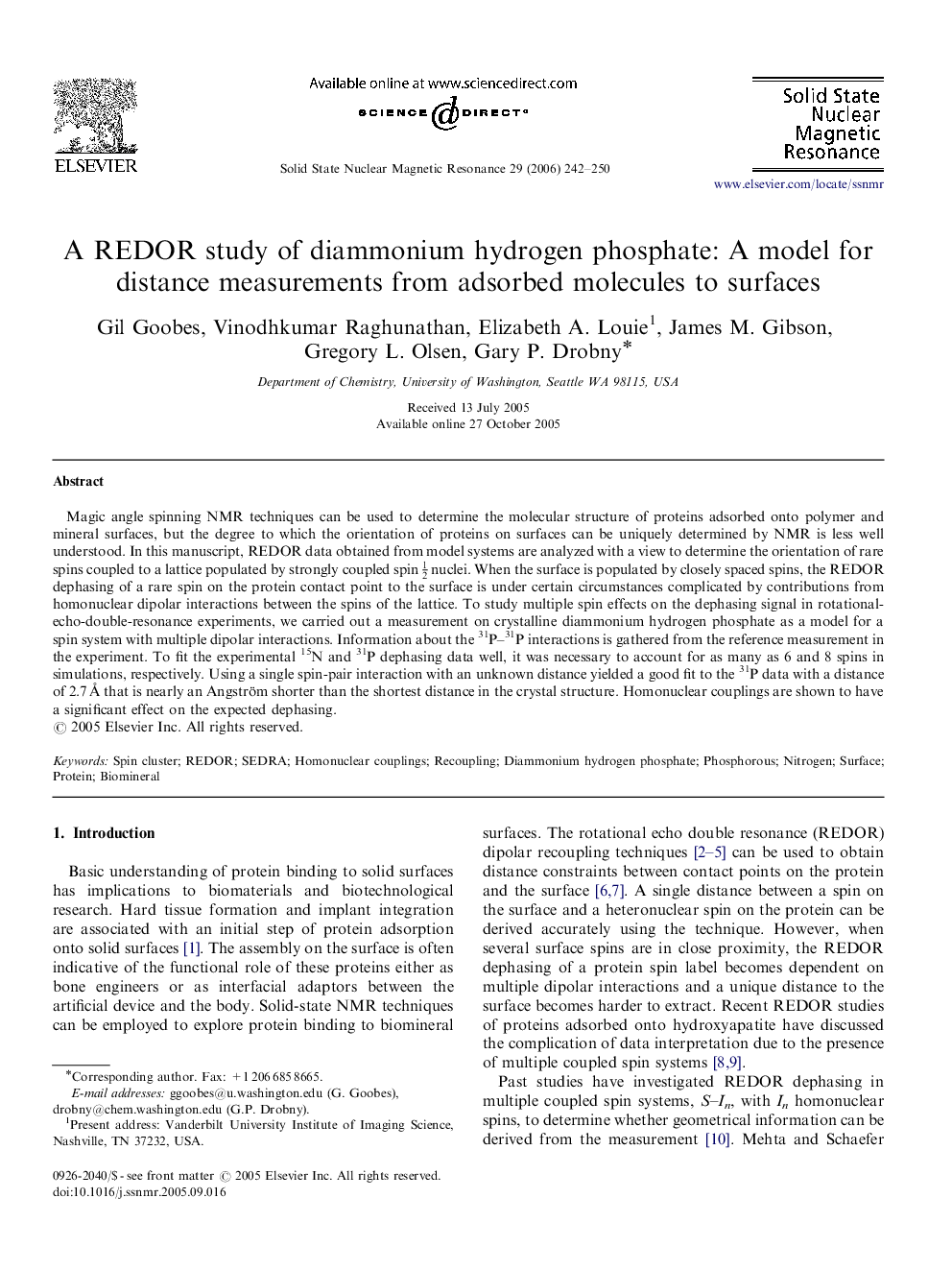| Article ID | Journal | Published Year | Pages | File Type |
|---|---|---|---|---|
| 5420997 | Solid State Nuclear Magnetic Resonance | 2006 | 9 Pages |
Abstract
Magic angle spinning NMR techniques can be used to determine the molecular structure of proteins adsorbed onto polymer and mineral surfaces, but the degree to which the orientation of proteins on surfaces can be uniquely determined by NMR is less well understood. In this manuscript, REDOR data obtained from model systems are analyzed with a view to determine the orientation of rare spins coupled to a lattice populated by strongly coupled spin 12 nuclei. When the surface is populated by closely spaced spins, the REDOR dephasing of a rare spin on the protein contact point to the surface is under certain circumstances complicated by contributions from homonuclear dipolar interactions between the spins of the lattice. To study multiple spin effects on the dephasing signal in rotational-echo-double-resonance experiments, we carried out a measurement on crystalline diammonium hydrogen phosphate as a model for a spin system with multiple dipolar interactions. Information about the 31P-31P interactions is gathered from the reference measurement in the experiment. To fit the experimental 15N and 31P dephasing data well, it was necessary to account for as many as 6 and 8 spins in simulations, respectively. Using a single spin-pair interaction with an unknown distance yielded a good fit to the 31P data with a distance of 2.7Â Ã
that is nearly an Angström shorter than the shortest distance in the crystal structure. Homonuclear couplings are shown to have a significant effect on the expected dephasing.
Keywords
Related Topics
Physical Sciences and Engineering
Chemistry
Physical and Theoretical Chemistry
Authors
Gil Goobes, Vinodhkumar Raghunathan, Elizabeth A. Louie, James M. Gibson, Gregory L. Olsen, Gary P. Drobny,
